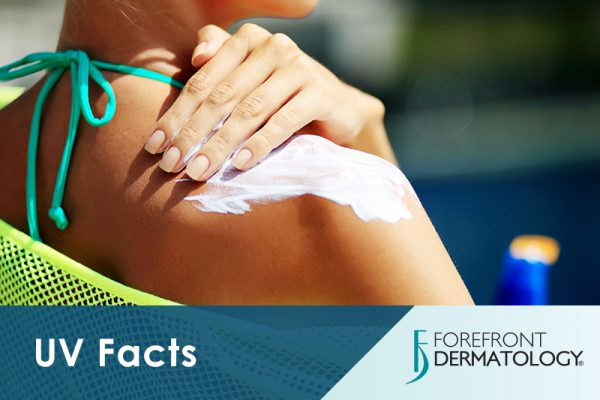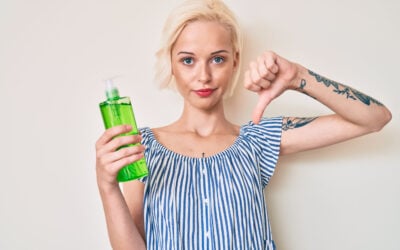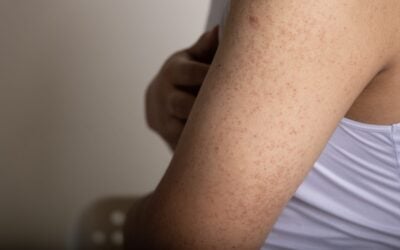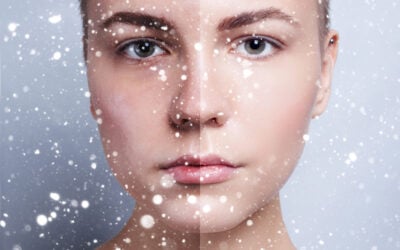
In honor of UV Safety Awareness Month, we’re devoting the entire month of July to shedding light on ultraviolet (UV) radiation. This week, we’re clearing up some common misconceptions about UV radiation. If you’re like me, you spend three quarters of your life impatiently waiting for summer. I would gladly take sweltering heat and sweaty armpits for three months of fun in the sun. Unfortunately, I also have a complexion that, on my tannest days, can be described as “translucent.” So, unless I want that “fun in the sun” to become “red and wishing I was dead” or “swell-a-noma until I developed melanoma,” I have to be smart about my sun exposure and the harmful affects of UV radiation. So, in an effort to help you enjoy the sun smarter, we’re finding the facts behind some popular UV myths. MYTH: Building a base tan can prevent future burns. Researchers have found that a base tan affords practically no protection against UV damage – those who tanned easily or had an olive complexion received protection equivalent to an SPF 3 sunblock. In fact, for those who are already susceptible to UV damage, it increases their risk for skin cancer. MYTH: Using a higher SPF sunscreen means you have to apply it less often. Sun Protection Factor (SPF) is an imperfect measurement a sunscreens ability to prevent UVB damage. Let’s look at an SPF of 15, for instance, will block out approximately 93 percent of UVB rays. If it takes you 20 minutes to burn without sunscreen, an SPF of 15 will increase that by a factor of 15 – so it will take you 300 minutes to burn. There are a few problems with this, though. First, an SPF of 50 will block about 98 percent of UVB rays – so the benefits of a higher SPF sunscreen are negligible. Second, while that SPF 15 sunblock may, in theory, afford you 300 burn-free minutes of sunshine, most sunscreens must be reapplied every 120 minutes (2 hours); sweating, contact with clothing or swimming will cause it to rub off. Finally, because so many people simply do not know what SPF really measures, they tend to assume they’re protected – so they neglect reapplication and spend longer periods of time in direct sunlight. Myth: Sun exposure is the best way to get Vitamin D. You don’t need to increase your risk of sun cancer to prevent Vitamin D deficiency. You can get most of the required amount of Vitamin D directly from your diet – fortified milk, cheeses and yogurt, fortified cereal, and oily fish like salmon and tuna are good sources. The rest can be obtained with the small amounts of sun exposure that you get going about your daily life. Individuals who are chronically ill, debilitated, elderly, dark skinned or who religiously keep their skin covered while outdoors may need to take Vitamin D supplements, but those are readily available, safe and effective. People who tan easily don’t have to worry about getting skin cancer. If you have darker skin or tend to tan easily, you may be less susceptible to UV damage than most, but you’re not completely immune to developing skin cancer. Regular self-examinations coupled with a yearly physical with your dermatologist can catch skin cancers at their earliest, most treatable stages – and may very well save your life. For tips on how to perform a self-exam and what you should be looking for, check out our post from Melanoma Awareness Month. You only have to worry about sun damage in the summer. “Winter or summer, it doesn’t matter. Same rays. Same damage,” says Dr. Peter Katz of the Forefront Dermatology clinics in Appleton and New London, Wis. “UVA rays are especially sneaky. While you won’t get a sunburn from exposure to UVA rays like you do with UVB rays, they penetrate deeper into your skin, where they do a whole lot of harm. They damage collagen, which contributes to signs of aging. They cause sun damage in the form of discoloration, freckles, and liver spots. And, most importantly, they can cause cancer.’ Look, I wouldn’t give up my sun-worshipping ways for anything. But I do so while keeping the immediate and long-term dangers of UV exposure in the back of my mind. Will I have to deal with skin cancer at some point in my life? Considering one in five Americans will develop skin cancer in their lifetimes and, genetically, I tick off all the major risk factors. Yeah. Probably. But with the knowledge, guidance and support of my dermatologist, I can live a long, healthy life without having to live out my days in a deep, dark cave. Totally worth it. To learn more about the dangers of UV exposure, talk to the skin care experts at Forefront Dermatology. To find the Forefront physician nearest you, visit the Locations page today.





